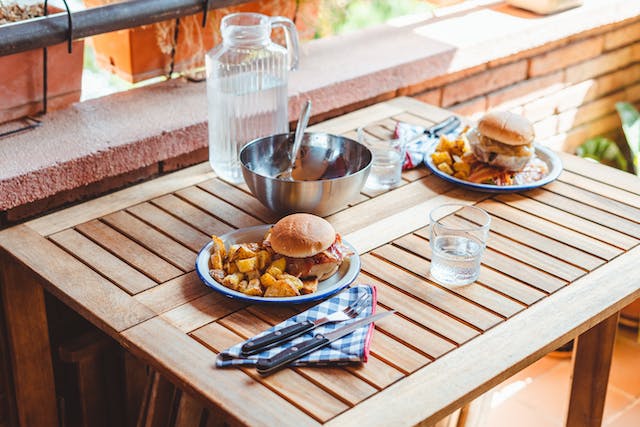The allure of outdoor kitchens, combining the charm of nature with the warmth of culinary delights, is undeniable. However, transitioning from the idea of an outdoor kitchen to its actual implementation demands meticulous planning. As with any significant home project, there are essential considerations to ensure the result is both functional and aesthetically pleasing. Here are five crucial insights to ponder before embarking on the journey of building an outdoor kitchen.
Understanding Climate and Environmental Factors
Before diving into the intricacies of layout design or material selection for an outdoor kitchen, it’s imperative first to assess the local climate and its accompanying challenges. Areas that experience frequent rainfalls not only demand the incorporation of weather-resistant materials but might also necessitate a dedicated shaded structure, such as a canopy or awning, to shield both the kitchen apparatus and the users from persistent precipitation.
Conversely, in locales where the sun blazes with intensity, incorporating structures like pergolas or even planting strategically placed trees can provide the much-needed shade, ensuring the space doesn’t turn into a veritable furnace during peak hours. Recognizing and planning for these elemental factors is not just about comfort; it’s about ensuring that the outdoor kitchen remains functional and resilient through all seasons. By catering to these considerations, homeowners can ensure a seamless outdoor cooking experience, maximizing the kitchen’s usability and longevity.
Optimal Placement is Key
Choosing the right spot for your outdoor kitchen in your yard or patio requires more than just aesthetics—it requires utility and safety. The closeness to the indoor kitchen makes transporting food, tools, and dishes easier, improving efficiency. Equally critical is the smoke direction: if you’re using grills or wood-fired ovens, make sure the smoke doesn’t blow into living rooms, which might be a nuisance and health threat. The layout should also avoid blocking frequent passageways to allow foot movement. Homeowners can design a beautiful, well-integrated outdoor kitchen by balancing these factors.
Durable and High-Quality Materials are Essential
When it comes to building an outdoor kitchen, the choice of materials plays a pivotal role in ensuring longevity and functionality. Given that these kitchens are exposed to various weather conditions, using durable and high-quality materials is non-negotiable. The prefab outdoor kitchen models, for instance, emphasize the use of materials that can withstand elements while also retaining their aesthetic appeal. Whether it’s the countertops, cabinets, or grilling stations, investing in premium materials upfront can save homeowners from frequent repairs and replacements down the line. Such a thoughtful approach not only ensures a robust kitchen space but also enhances the overall outdoor cooking experience.
Efficient Utilities and Infrastructure Planning
Setting up an outdoor kitchen necessitates more than just the inclusion of a cooking apparatus; it also requires a well-thought-out utility infrastructure encompassing water, electricity, and potentially gas. When laying out these utilities, a meticulous plan is paramount to ensure that the routes for pipes and wires neither mar the aesthetic appeal of the landscape nor pose tripping or safety hazards. It’s also beneficial to think ahead regarding maintenance and repairs, ensuring easy access to these utility lines without significant disruptions.
On the sustainability front, integrating energy-efficient solutions, such as solar-powered lighting or even induction cooktops, alongside water-conservation methods like rainwater harvesting can greatly minimize the kitchen’s ecological footprint. Adopting these green approaches not only makes the outdoor space more cost-effective over time but also aligns with the growing emphasis on environmentally conscious living.
Invest in Multi-Functional Features
Space optimization is crucial for any well-designed outdoor kitchen since every square foot matters. Multi-functional features let homeowners combine flair and efficiency. A countertop with storage compartments below it or a barbecue with a side burner shows how to maximize space. Rolling carts and folding tables can be used during a busy barbeque and stored when the room is required for bigger parties. Prioritizing such adjustable items means that the outdoor kitchen can gracefully adapt to changing events or circumstances.
Conclusion
Crafting the perfect outdoor kitchen is a blend of thoughtful planning, understanding environmental nuances, and investing in quality. These spaces, while extensions of the home, have unique considerations distinct from their indoor counterparts. By taking into account the above insights, homeowners can ensure their outdoor kitchen transcends mere aesthetics, evolving into a harmonious fusion of function, durability, and delight. Such meticulous planning not only enriches the culinary experience but also elevates the essence of outdoor living.










